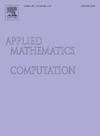具有猎物阶段结构的三维Filippov病虫害-天敌系统分岔分析
IF 3.5
2区 数学
Q1 MATHEMATICS, APPLIED
引用次数: 0
摘要
害虫防治是菲力波夫系统在生态学中的重要应用,近年来备受关注。采用广泛认可的害虫综合治理(IPM)策略,对菲利波夫害虫-天敌系统进行了许多研究。然而,这些研究主要集中在平面Filippov模型上,没有考虑种群的阶段结构。众所周知,几乎所有的物种都有一个从未成熟到成熟的生命周期。因此,在本文中,我们提出了一个三维(3D)菲利波夫系统,考虑到害虫种群的阶段结构。以两期害虫种群的加权和作为防治指标。由于不连续边界由线向面转变,发展了新的分析技术来研究复杂动力学。特别地,发现了大量的滑动分岔,特别是一个谜一般的全局分岔。这一有趣的全局分岔机制可能颠覆传统的分岔分析,表明进一步研究Filippov系统动力学行为的必要性。此外,我们的研究结果有力地证明了经济门槛在IPM战略中的关键重要性。人们发现,仅仅及早采取行动并不总是有效的;阈值设置过低会导致控制失败,过高则会使策略本身失效。在结论部分详细讨论了生物学意义。本文章由计算机程序翻译,如有差异,请以英文原文为准。
Bifurcations analysis of a 3D Filippov pest-natural enemy system with stage structure for the prey
Pest control is an important application of the Filippov system in ecology and has attracted much attention. Many studies on Filippov pest-natural enemy systems have been done by employing the widely recognized Integrated Pest Management (IPM) strategy. However, those studies primarily focused on planar Filippov models without considering the stage structure of populations. It is well-known that almost all species have a life cycle from immature to mature. Thus, in this paper, we propose a three-dimensional (3D) Filippov system that takes into account the stage structure of the pest population. The weighted sum of two-stage pest populations is set as the control index. Since the discontinuity boundary changes from line to plane, new analytical techniques are developed to investigate the complex dynamics. In particular, abundant sliding bifurcations are detected, especially an enigmatic global bifurcation. This intriguing global bifurcation mechanism may overturn traditional bifurcation analyses, indicating the necessity for further investigations into the dynamical behavior of Filippov systems. Moreover, our results make a strong case for the critical importance of the economic threshold in the IPM strategy. Pest control is found not always effective simply by acting sooner; setting the threshold value too low would cause control failure while setting it too high would invalidate the strategy itself. Detailed biological implications are discussed in the conclusion.
求助全文
通过发布文献求助,成功后即可免费获取论文全文。
去求助
来源期刊
CiteScore
7.90
自引率
10.00%
发文量
755
审稿时长
36 days
期刊介绍:
Applied Mathematics and Computation addresses work at the interface between applied mathematics, numerical computation, and applications of systems – oriented ideas to the physical, biological, social, and behavioral sciences, and emphasizes papers of a computational nature focusing on new algorithms, their analysis and numerical results.
In addition to presenting research papers, Applied Mathematics and Computation publishes review articles and single–topics issues.

 求助内容:
求助内容: 应助结果提醒方式:
应助结果提醒方式:


